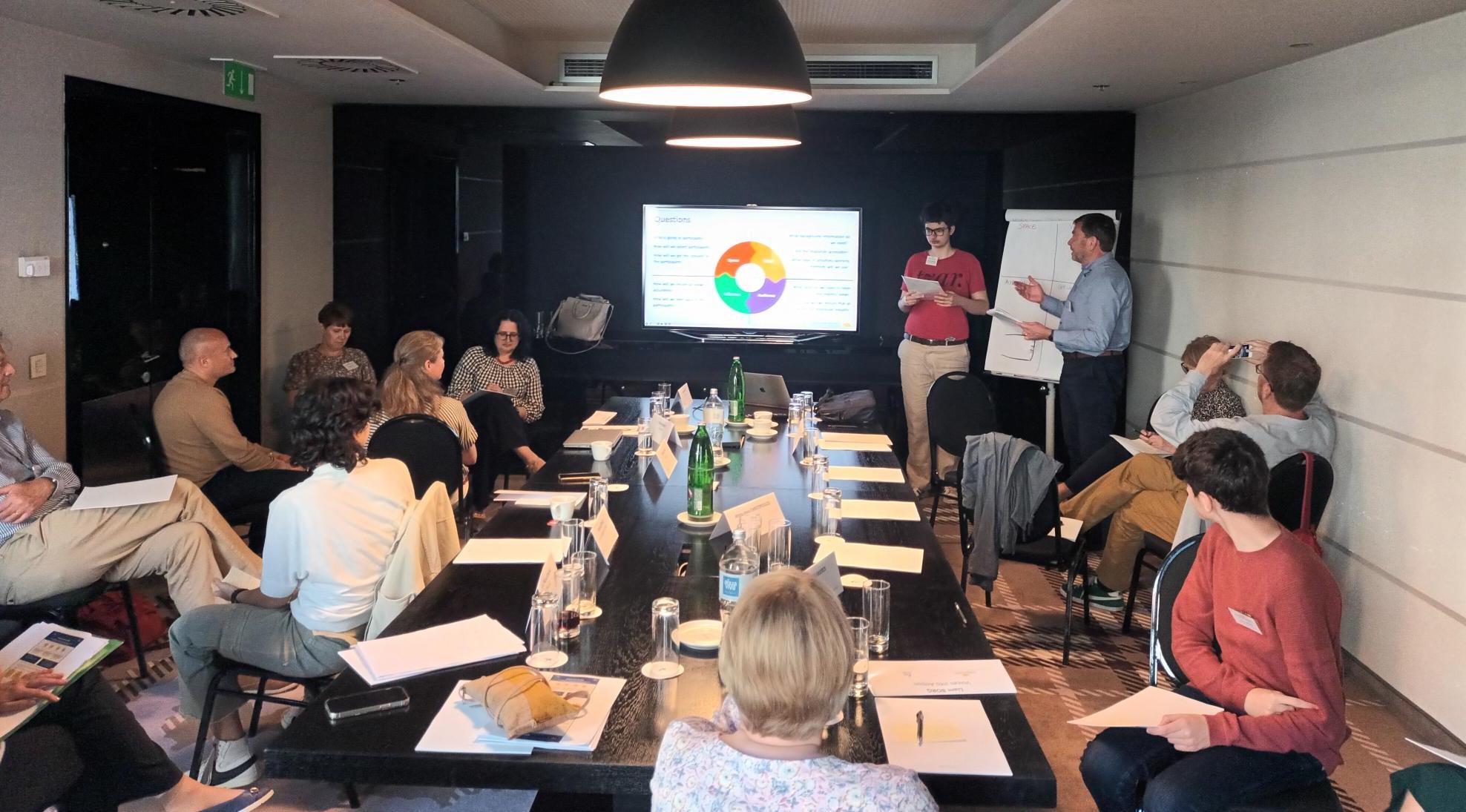An education system or school cannot be considered inclusive if marginalisation exists and the voices of those closely involved are not heard. Although learners and their families have gradually gained opportunities to share their opinions, these rarely have an impact on educational decisions. Moreover, the COVID-19 pandemic has limited the opportunities to hear the voices of the most vulnerable learners and families.
The Voices into Action (VIA) project examined the critical issue of involving the voices of learners and their families and how to effectively include them in decision-making.
Project framework
Previous Agency work – such as the European Hearings and the Raising the Achievement of All Learners in Inclusive Education project – has indicated that listening to learners and their families is crucial for developing more inclusive schools and education systems.
Promoting learner participation in decision-making and policy development is now a key priority for European and international organisations. In 2021, several initiatives centred on learners, both as a focus and as agents for change. 2022 was the European Year of Youth, and the time to guarantee extensive representation. At the same time, all stakeholders – including parents, families and guardians – should be active agents in creating equitable learning experiences for all learners.
Guided by these principles, the VIA project’s overall goal was to indicate effective ways of promoting the voices of learners and their families in decision-making processes, in order to build better, more inclusive education systems.
The project started in 2021 and concluded in 2023.
Aims
The VIA project aimed to identify key messages to ensure the voices of learners and their families are included effectively in education decision-making. The project achieved this by:
- providing a focused analysis of policy and research evidence on effective ways to include the voices of learners and their families in policy development and implementation;
- examining examples of how previous Agency project work and Agency member countries have considered the voices of learners and their families (at local, regional and national levels);
- exploring relevant approaches, guidelines, tools and/or appropriate methodologies and suggesting effective examples of policy and practice.
Participants and target group
In Phase 1, participants included Agency staff and 19 Agency member countries, who provided their country examples.
In Phase 2, participants included selected Representative Board members, learners and families.
The target groups for the project outcomes are the Agency staff (aiming to inform Agency work) and decision-makers at national, regional and local levels who aim to promote learner and family voices in decision-making.
An indirect target group is other stakeholders involved in implementing programmes for learner and family participation, empowerment and decision-making (i.e. stakeholders from partner organisations and other civil society organisations).
Project activities and outputs
In Phase 1, desk research activities included analysing key policy and research literature on why learners and families should be involved in decision-making and how to effectively involve them. Activities also included collecting and analysing examples from previous Agency work and member countries’ efforts to involve learners and families in decision-making.
In Phase 2, a small cluster of countries (Iceland, Malta and Norway) engaged with learners and families in national interactive activities.
The project findings led to key messages on how future Agency work and Agency member countries can include the voices of learners and their families.
The main project outputs are:
- A literature review. This review provides the theoretical background for the VIA project. It summarises important European and international policy information on the topic and sets out key research knowledge from the past 20 years. The review’s key findings highlight important considerations for involving learners and families more systematically in educational decision-making at all levels.
- A project report. The report provides a focused rationale and key policy and research evidence on effective ways to include learner and family voices in education decision-making. It also illustrates relevant examples from past Agency projects and specific national efforts to integrate learner and family voices into policy-making and implementation. It presents the ‘VIA framework for meaningful participation’ and concludes with key messages for future work to meaningfully involve learners and families.
- An online toolkit. The toolkit provides guidance on how to act upon and truly embed learner and family voices in decision-making. It includes main principles and specific step-by-step guidelines, approaches, tools, methodologies, innovative practices and direction to action. It also presents examples from Agency member countries, showing practical ways of involving learners and families.
- A final report summarising the project’s rationale, methodology and the main project outcomes.
- An infographic conveying the project’s key messages.
- A video featuring learners and their families discussing the impact that participating in educational decision-making has had on them. It also introduces the VIA Framework for Meaningful Participation and the Online Toolkit. Policy-makers from participating countries also discuss how the VIA activity and framework have impacted their work.
Related items
Mangiaracina, A., Kefallinou, A., Kyriazopoulou, M. and Watkins, A., 2021. ‘Learners’ Voices in Inclusive Education Policy Debates’ Education Sciences, 2021, 11 (10), 599.


